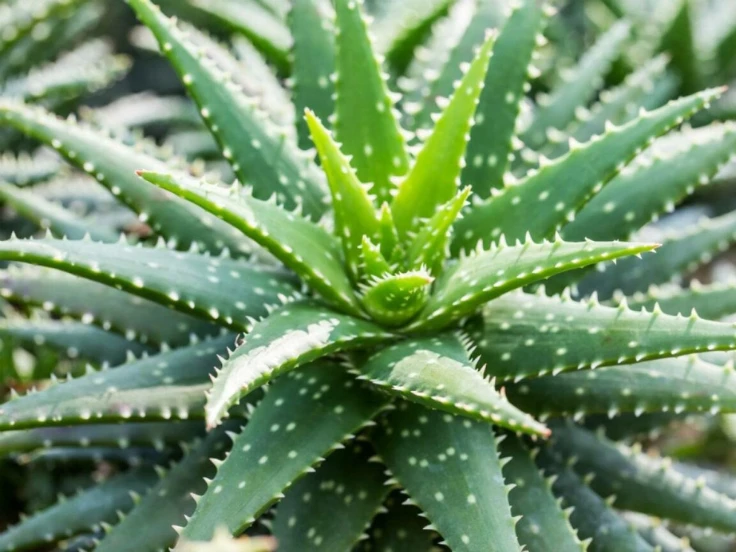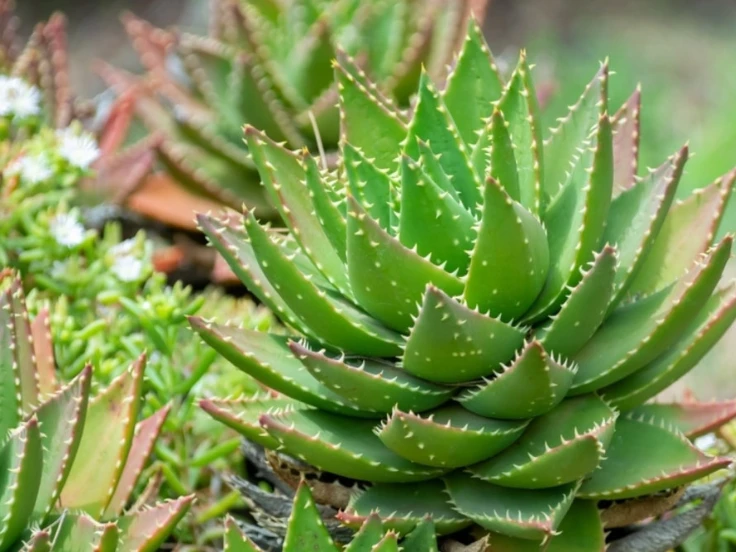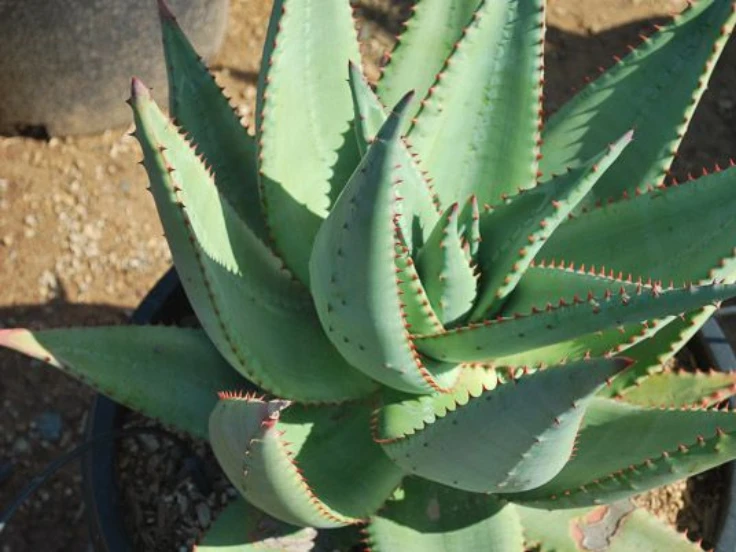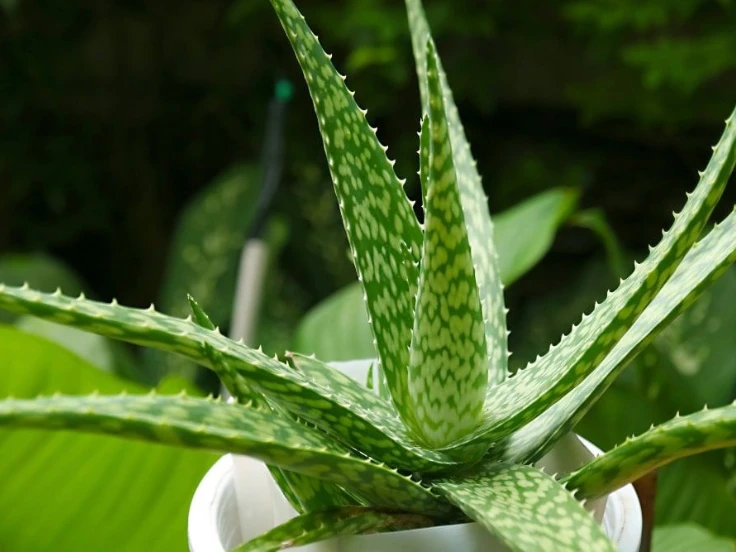Aloe plants display striking forms and diverse species. By exploring aloe types with pictures, gardeners and succulent enthusiasts can identify and select the best species for their spaces. From the well-known Aloe vera, prized for medicinal use, to rare varieties like Aloe polyphylla with its spiral leaf pattern, these plants offer both beauty and functionality.
Additionally, understanding aloe varieties helps gardeners choose species suited to their climate and aesthetic goals. In this guide, we explore popular aloe types with pictures, highlight their key features, and provide practical care instructions to help you maintain a thriving aloe collection.
What Are Aloe Plants?

The Aloe genus contains more than 500 succulent species, mostly native to Africa. Many species feature fleshy leaves and colorful flowers. While Aloe vera is widely recognized for medicinal benefits, other species offer unique visual appeal, making them popular choices for ornamental gardens.
Moreover, certain aloe species provide practical applications in traditional medicine, while others enhance landscapes with their drought tolerance. To learn more, check the benefits of aloe vera plant in home.
Common Aloe Types with Pictures

1. Aloe Vera (Aloe barbadensis miller)
Aloe vera enjoys worldwide recognition for its thick, fleshy leaves. People apply the gel to burns and skin irritations. It thrives in bright, indirect light and well-draining soil. Therefore, gardeners should water it sparingly.
Thanks to its low-maintenance nature and valuable medicinal benefits, Aloe vera is ideal for both beginner and experienced gardeners, and it adapts well to indoor and outdoor spaces.
2. Aloe Vera Variegata: Variegated Aloe Types with Pictures
This variety stands out with white-striped or speckled leaves, giving it a striking visual appeal. Many gardeners grow it primarily for decoration, though it also shares Aloe vera’s medicinal properties.
Bright indoor light or moderate outdoor sunlight helps this plant thrive. Additionally, providing well-draining soil and careful watering prevents root rot, supports healthy growth, and encourages vibrant leaf coloration.
3. Aloe Ferox (Cape Aloe)
Native to South Africa, Aloe ferox features tall, spiky leaves and bright orange flowers. People cultivate it for medicinal use and as an ornamental plant, and its drought tolerance makes it ideal for low-maintenance gardens.
Full sunlight and dry conditions allow Aloe ferox to flourish, making it ideal for xeriscaping. Moreover, its bitter gel sometimes serves medicinal purposes, and gardeners appreciate its resilience in arid landscapes.
4. Aloe Arborescens (Torch Aloe)
Aloe arborescens grows as a large shrub with red or orange tubular flowers, which attract birds and bees that help with pollination. It also serves as an excellent ornamental plant for gardens due to its vibrant color and hardy nature.
Gardeners favor Aloe arborescens because it tolerates frost better than many other species. Additionally, it provides medicinal benefits similar to Aloe vera, such as soothing the skin.
5. Aloe Polyphylla (Spiral Aloe)
Aloe polyphylla captures attention with its spiral leaf arrangement. Native to Lesotho, it thrives in cool climates with well-draining soil, and its unique pattern makes it a prized ornamental plant for collectors and gardeners alike.
Gardeners must water it carefully, as overwatering can harm the plant. Consequently, collectors prize this ornamental plant for its striking spiral pattern.
6. Aloe Aristata (Lace Aloe): Compact Aloe Types with Pictures
Aloe aristata forms small rosettes with white-spotted leaves. People often grow it in containers for both indoor and outdoor gardening, and its compact size makes it perfect for small spaces or decorative arrangements.
Its hardy nature and low maintenance make it ideal for beginners. Additionally, compact size allows it to thrive in small pots or garden beds.
7. Aloe Cameronii (Red Aloe): Colorful Aloe Types with Pictures
Aloe cameronii displays coppery-red leaves that enhance garden visuals. It grows well in full sun and dry conditions.
Sunlight intensifies its color, creating a striking effect. Consequently, gardeners value its durability and ornamental appeal.
8. Aloe Vera var. Chinensis: Rare Aloe Types with Pictures
This variant differs slightly in leaf shape and growth habit. People use its gel for minor burns and skin care, similar to standard Aloe vera.
When cultivated at home, the plant adapts well to sunlight, occasional watering, and well-draining soil. Furthermore, proper care ensures healthy growth and robust leaves.
Aloe Care Tips

-
Light: Bright, indirect sunlight suits most species, although some tolerate full sun.
-
Watering: Let the soil dry completely before watering again. Avoid overwatering to prevent root rot.
-
Soil: Use well-draining soil, such as a cactus or succulent mix.
-
Temperature: Aloe plants thrive in warm climates, but gardeners should protect them from frost.
In addition, pruning dead leaves encourages new growth and keeps plants visually appealing. Occasional fertilization with a succulent fertilizer strengthens leaves and promotes flowering. Similarly, repotting every few years ensures adequate root space and healthy plant development.
FAQs About Aloe Types
Q1: Can aloe plants grow indoors?
Many aloe species, including Aloe vera and Aloe aristata, thrive indoors if placed in adequate light, planted in well-draining soil, and watered minimally.
Q2: Do all aloe species have medicinal properties?
No. Aloe vera and Aloe ferox are the most commonly used for medicinal purposes. However, other species primarily serve ornamental or landscaping functions.
Q3: How can gardeners propagate aloe plants?
Gardeners can propagate aloe through offsets (pups) growing at the base of mature plants. By removing the pups and planting them in well-draining soil, they can grow new specimens.
Q4: Which aloe species work best for ornamental purposes?
Species such as Aloe polyphylla, Aloe aristata, and Aloe cameronii stand out for their patterns, colors, and visual appeal. Therefore, gardeners often select them to enhance landscaping aesthetics.
Conclusion
Aloe plants provide a wide variety of species with distinct appearances, growth habits, and care requirements. Gardeners can choose medicinal Aloe vera or ornamental Aloe polyphylla to suit their goals. Understanding each species’ sunlight, soil, and watering needs ensures strong and visually appealing growth. Learn more from these desert plants growing tips.
Exploring aloe types with pictures enables gardeners to make informed decisions for home decoration, medicinal use, or landscaping. Moreover, maintaining proper care, including sufficient light, well-draining soil, and careful watering, guarantees healthy and thriving aloe plants. For additional information, visit The Spruce: Types of Aloe Plants.


















